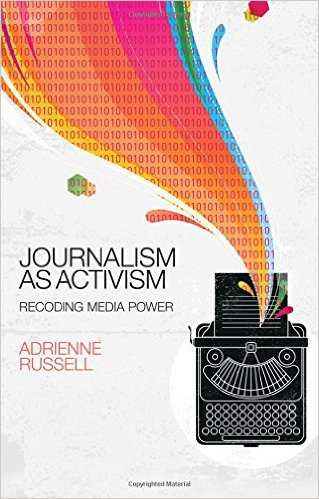
Immerse issue #4: On digital solidarity

By Jessica Clark
This month, we look at how digital platforms can enable real solidarity.
These walls can talk
Discover how veteran political artist Jenny Holzer is combining augmented reality, testimony, and installation art to bring new relevance to the AIDS crisis.
Making protest more accessible
From Mashable: “The Disability March organizers invite people living with disabilities to submit their names, photos and a statement on why they want to ‘march.’ The images and text will be uploaded to the website in time for the Women’s March on Jan. 21, creating a virtual archive of people showing solidarity with the main event in Washington, D.C.”
From our bookshelf
Get a better grasp of the relationship between technology, storytelling and organizing through the work of these researchers:

Adrienne Russell’s Journalism as Activism: Recoding Media Power (2016) examines the intersection between digital journalism and digital organizing in light of recent movements, arguing that our existing models for understanding how media power functions are no longer useful.
In her book, Pixels and Place: Connecting Human Experience Across Physical and Digital Spaces (2016), tech humanist Kate O’Neill offers insights from the digital marketing world on intentionally combining online and analog experiences to achieve desired outcomes — relevant for virtual activists seeking to make change.
Taylor Owen’s Disruptive Power (2105) explores how networked movements use digital technologies to challenge state power and threaten existing institutions, and how the state is responding to modern forms of virtual civil disobedience.
In this popular 2014 TEDGlobal Talk, Zeynep Tufekci argues that while digital tools have made political organizing easier, they have not necessarily led to better outcomes than old-school methods of organizing did. She asks: “In embracing digital platforms for activism and politics, are we overlooking some of the benefits of doing things the hard way?”
University of Illinois at Chicago Professor Zizi Papacharissi explores whether current technologies are democratizing, including whether digital political behaviors are collective or “atomized” in A Private Sphere: Democracy in a Digital Age (2010). In Affective Publics: Sentiment, Technology, and Politics (2014), she examines how the public display of emotion affects online and offline solidarity movements.
See how narratives have historically played a central role in social movements in Francesca Polletta’s 2006 It Was Like a Fever: Storytelling in Protest and Politics.
This could get ugly, folks
From The Intercept: Tips for media makers on how to thwart digital surveillance.
Immerse is an initiative of Tribeca Film Institute, MIT Open DocLab and The Fledgling Fund. Learn more about our vision for the project here.